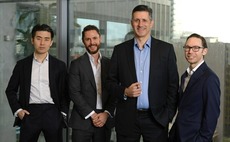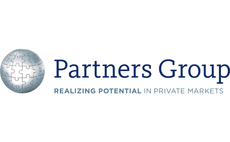
Q&A: Denham Capital's Bert Koth
For resources-focused GP Denham Capital, the commodities downturn has thrown up some interesting opportunities. Bert Koth, the firm’s Perth-based managing director, explains why his eye is now on Asia
Q: What sort of opportunities does Denham target and how does your strategy differ from traditional PE?
A: We try to de-risk the asset by focusing on intrinsic value-add. In the current metals and mining market there is a scarcity of developmental capital so we tend to take control of undercapitalized - and in some cases under-managed - assets and bring them into positive cash-flow. We improve the assets by exploring within the existing mine plan and expanding the life of the mine. The main difference is that we do not use financial engineering or leverage to create value. We spend a lot of time trying to identify the best operating team. The people come before the asset - if we can't find the right people then we are happy to let go of a good asset.
Q: What are the trends driving the current crisis in the mining industry?
A: If you look at the current funding crisis in the junior mining sector, the main cause is not slowing economic growth in China, or the debt crisis in the US or Europe; it is that junior mining companies trading on the public markets were over promoted and overvalued. You had too many people running around trying to sell a beautiful story about perpetual growth and the risks were never properly understood or analyzed.
Q: Has this changed the way you invest?
A: The whole money-making paradigm in metals and mining that has changed. Five or six years ago capital might go into advanced exploration, but now you can only create value by going into producing assets and at a late stage. So where you once had longer holding periods and higher risk, now you have shorter holding periods and lower risk. It is positive for the industry because a lot of these companies are not viable and the management teams are mediocre; they are just going to run out of cash and disappear from the market.
Q: You did two mining deals in Australia in 2014. What were the driving factors?
A: Auctus Minerals and Pembroke Resources are the first two metal and mining platforms we have done in Australia. The reason we waited was because, until recently, Australia was unrealistically expensive for running projects - valuations were too high and the execution costs for business plans were too high. We looked at hundreds of projects with only a handful making any sense. Only with the funding crisis have we been able to find attractive terms. Pembroke and Auctus are new companies founded with our capital and led by management teams with a track record of successfully building mining projects ahead of time and below budget.
Q: Do you expect to see more deals in the wider Asia region?
A: Pembroke, which is developing metallurgical coal assets, already has a mandate for Indonesia and we will continue to look at opportunities in a number of countries, primarily in Southeast Asia. We do believe the Pacific Rim countries, particularly Indonesia and Papua New Guinea, are among the most geologically prospective in the world. If you take a long-term view, eventually we will seek to establish more mining platforms elsewhere in Asia.
Q: How has the fall in oil prices impacted the mining and metals industry?
A: From a mining perspective I always regard oil prices as a dirty hedge. If oil prices go down then the operating costs of mining operations go down - energy costs usually comprise 20-25% of the overall operational cost of a mining asset. Also, if you look at long-term exchange rate correlations, usually when oil prices go down, the US dollar goes up and emerging market currencies go down. Given that most of a mining asset's operating costs are in emerging market currencies and revenue is often in US dollars, by and large falling oil prices will again be beneficial.
Q: How much longer will the status quo in the commodities market remain?
A: Commodities prices will continue to fall for the next two years and then bottom out. You will need to wait six years or so for a cyclical uplift in metals and mining. This shouldn't come as surprise because we are at the end of the largest super cycle in history, and it was exacerbated by people talking up the market. The valuation of the average junior miner is 90% down from its peak while the average cash lifespan on the balance sheets of these companies is less than six months. If you participated in every single IPO of a junior mining company in the last six years, you would have lost around 50% of your money.
Q: What is your medium-term outlook for PE investors targeting mining assets?
A: I regard the current situation as one of the best, if not the best, entry points in a decade for the sector-focused investor who knows what they are doing, because strictly-speaking most people who invest in metals and mining don't. The second positive note is that if most projects are not getting funded then demand might exceed supply sooner than most people expect, and that will lift prices up. It is not going to happen tomorrow, or next year, but it is paving the groundwork for the next up-cycle.
Latest News
Asian GPs slow implementation of ESG policies - survey
Asia-based private equity firms are assigning more dedicated resources to environment, social, and governance (ESG) programmes, but policy changes have slowed in the past 12 months, in part due to concerns raised internally and by LPs, according to a...
Singapore fintech start-up LXA gets $10m seed round
New Enterprise Associates (NEA) has led a USD 10m seed round for Singapore’s LXA, a financial technology start-up launched by a former Asia senior executive at The Blackstone Group.
India's InCred announces $60m round, claims unicorn status
Indian non-bank lender InCred Financial Services said it has received INR 5bn (USD 60m) at a valuation of at least USD 1bn from unnamed investors including “a global private equity fund.”
Insight leads $50m round for Australia's Roller
Insight Partners has led a USD 50m round for Australia’s Roller, a venue management software provider specializing in family fun parks.








